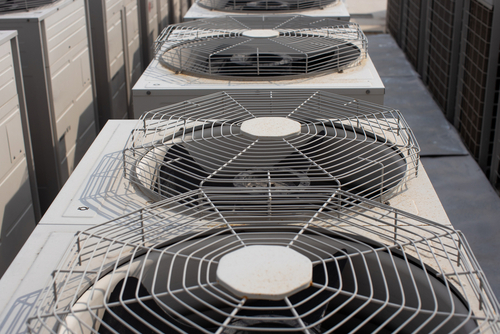Replacing RTU’s And Why The Structure Should Be Checked For Loading

Replacing rooftop units (RTU’s) is a necessary task that building owners and managers should not overlook. RTU’s play a crucial role in heating, ventilation, and air conditioning (HVAC) systems in commercial buildings. Over time, these units can wear out, malfunction, or become inefficient, leading to increased energy costs and reduced comfort levels for occupants. In addition to replacing RTU’s, it is also important to ensure that the structure supporting these units can handle the weight and loading requirements to prevent any safety hazards.
Signs That It’s Time To Replace RTU’s
There are several signs that indicate it’s time to replace RTU’s in a commercial building. One of the most common signs is increased energy bills due to the inefficiency of the unit. If the RTU is constantly running or struggling to maintain the desired temperature, it may be time for a replacement. Other signs include strange noises, leaks, inconsistent airflow, and poor air quality. It is important to address these issues promptly to avoid further damage to the unit and prevent any safety hazards.
Importance Of Checking The Structure For Loading
When replacing RTU’s, it is crucial to check the structure supporting these units for loading requirements. RTU’s are heavy equipment that can put a significant amount of weight on the roof of a commercial building. Overloading the structure can lead to serious safety hazards, including roof collapses and structural damage. By assessing the structure’s loading capacity, building owners and managers can ensure that the RTU’s are installed safely and securely.
Assessing The Structural Integrity
Before replacing RTU’s, it is important to assess the structural integrity of the building to determine if it can support the new units. A structural engineer should conduct a thorough inspection of the roof to check for any signs of damage, deterioration, or weaknesses. They will also consider factors such as the age of the building, the materials used in construction, and any previous modifications that may have been made to the roof. By conducting a detailed assessment, building owners and managers can identify any potential issues and address them before installing the new RTU’s.
Calculating The Loading Requirements
Once the structural integrity has been assessed, the next step is to calculate the loading requirements for the new RTU’s. The weight of the units, as well as any additional equipment such as ductwork and piping, must be taken into account. Factors such as wind loads, seismic activity, and snow loads should also be considered to ensure that the structure can safely support the RTU’s. By calculating the loading requirements, building owners and managers can avoid overloading the structure and prevent any safety hazards.
Reinforcing The Structure If Necessary
In some cases, the existing structure may not meet the loading requirements for the new RTU’s. If this is the case, reinforcement may be necessary to strengthen the roof and ensure the safety of the units. Reinforcement options can include adding additional support beams, bracing, or installing heavier roofing materials. Building owners and managers should work closely with a structural engineer to determine the best course of action for strengthening the structure and ensuring that the RTU’s are installed safely.
Installing The New RTU’s Safely
Once the structure has been assessed, the loading requirements have been calculated, and any necessary reinforcements have been made, it is time to install the new RTU’s. It is important to work with experienced HVAC contractors who have the knowledge and skills to properly install the units in accordance with building codes and safety standards. Contractors should also perform a final inspection to ensure that the RTU’s are securely fastened and that the structure can safely support the weight of the units.
Maintaining The RTU’s And Structure
After the new RTU’s have been installed, it is important to maintain both the units and the structure to ensure their longevity and efficiency. Regular maintenance of the HVAC system can help prevent issues such as leaks, malfunctions, and breakdowns. Cleaning the coils, changing filters, and inspecting the units for wear and tear are all essential tasks that should be performed regularly. Additionally, building owners and managers should schedule routine inspections of the structure to check for any signs of damage or deterioration that could compromise the safety of the RTU’s.
Summary
Replacing RTU’s is a necessary task that building owners and managers should not overlook. By checking the structure for loading requirements before installation, building owners and managers can prevent safety hazards and ensure the longevity of the units. Assessing the structural integrity, calculating the loading requirements, reinforcing the structure if necessary, and installing the new RTU’s safely are all essential steps in the process. By working with experienced HVAC contractors and maintaining both the units and the structure, building owners and managers can ensure that their HVAC systems are efficient, reliable, and safe for occupants.
Need Engineers and Designers in Hudson, CO?
Since 2006, High Plains Engineering & Consulting, LLC has been a civil and structural engineering company in Fort Lupton and the surrounding areas. We provide sensible solutions to geotechnical, structural, environmental, and civil engineering challenges. Our office provides practical expertise backed by diverse design resources to get the job done cost-effectively and efficiently with sustainability in mind. We offer various services for commercial, residential, and agricultural properties like soil testing, percolation testing, and foundation and septic design for new construction. Once that is taken care of we also offer services for floor framing, garage plans, house plans, site plans, and inspection services. Call us today for an appointment!
Categorised in: RTU

 HPEC is an active member of CAGE
HPEC is an active member of CAGE